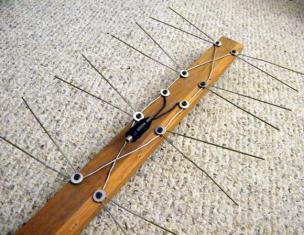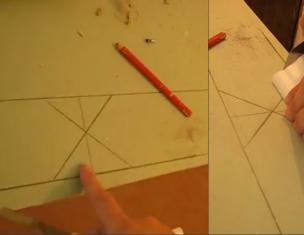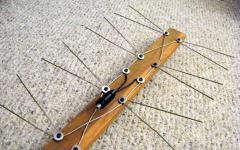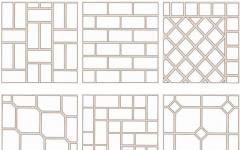Ventilation of the kitchen in the residential room the thing is necessary. Without ventilation, the smell hits from the kitchen to other living rooms - bedroom, children's, living room. Also without proper drawing directly above the cooking surface, it is possible to settle fat deposits on all possible surfaces - walls, furniture, equipment, food.
Types of ventilation schemes
Before deciding what a ventilation system will be best set in the kitchen, it is recommended to understand the circuits and their device. First of all, four types are isolated:
- natural ventilation carries out the influx of fresh air and takes out the inner, using the levels of pressure in the kitchen;
- supply ventilation serves fresh air into the kitchen, and the old one will take;
- exhaust ventilation is based on the principle of exhaust air from the room, and the influx of the new rely on the moment of pressure discharge;
- the supply-exhaust system foresides the circulation of air and its exchange with the help of special equipment.
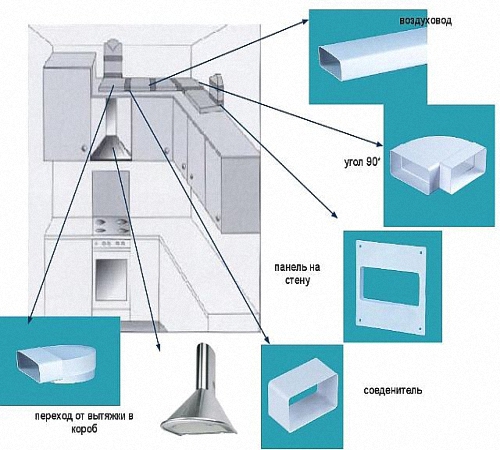
Natural scheme
At the beginning, we consider the features of natural ventilation in the kitchen. Such a system was used in the construction of old houses. In such a scheme, you need to constantly check all the thrust in the ventilation channels.
Check such a system possible with the help of two options:
1. Such ventilation is usually placed under the ceiling. If the paper sheet is applied to the grid, then in the working condition of the system, it will stick to the surface.
2. Otherwise, you can scatch or lighter. If the ventilation works, it means that the flame will deflect the lattice.
In the event of a malfunction, the entire ventilation shaft must be cleaned of contamination and dust. Also worth paying attention to the cleaning of the air duct. If, after cleaning the entire system, it remains not working to refer to the specialists. However, such ventilation has a lot of flaws, because it is not as effective in work, and therefore it is necessary to install even ventilation equipment.
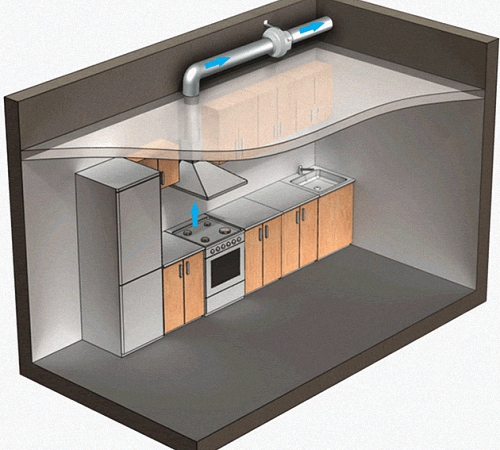
Exhaust scheme
Exhaust ventilation in the kitchen is one of the most popular systems for use in the kitchen. As a rule, it happens two types:
- general - provides for the establishment of a fan with a grille, which carries out air exchange;
- the local system is based on the installation of equipment, such as a extractor, which helps to pull all odors, pairs and gas using the fan function.
The most common and modern system is to install an exhaust in the kitchen. As a rule, it has a dome shape and is directly connected to the ventilation system with an installed air duct.
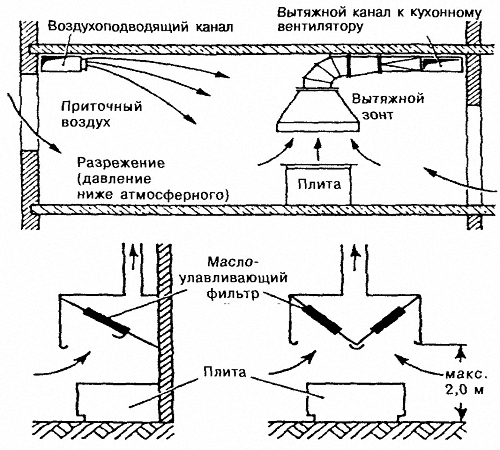
Supply ventilation scheme
This system is established very rarely. Definitely, it is part of the supply and exhaust scheme, which allows you to more effectively carry out air circulation in the kitchen. Such equipment is installed in the absence of an exhaust, but it is necessary to carefully check the performance of the traction system. In another embodiment, such ventilation will not work, and polluted air together with the fresh will be distributed in all rooms of the apartment or at home. Most often, the auxiliary element serves as a fan.
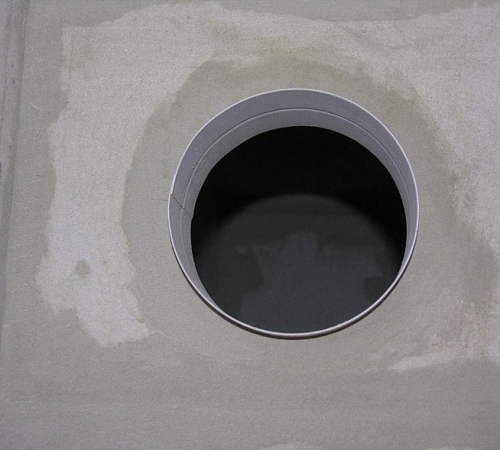
It is worth noting that manufacturers offer modern models that are equipped with special sensors for measuring temperature and humidity in the kitchen. Therefore, their work is quite automatic. Such equipment is not cheap options, it does not fully justify yourself in work.
Ventilation in the kitchen is divided into local and general.
Consider in more detail the exhaust ventilation system, since it is most popular in the installation, it is in the kitchen. First of all, we will pay attention to the advantages and disadvantages of such systems, as well as describe the features of the equipment.
Local ventilation is exhaust ventilation over the most problematic places in the kitchen. If we are talking about the living quarters, of course, the parokonvector and mangal will rarely meet. So, the local exhaust in the residential room is necessary only over the cooking surface.
The easiest option is to use ventilation in the kitchen with an exhaust, as an element of household appliances, the required dimensions are selected in it, and the desired air velocities are configured. The minus of this system is a high level of noise, despite the expensive model or cheap.
Another, more complicated, but an interesting option is to establish your own, unique exhaust. This is necessary if a unique design is developed. In this case, only a kitchen umbrella with inserts are mounted in the kitchen, which traveled fat. The fan itself can be located in the utility room or in the attic. With such a concept, your hood will be silent.
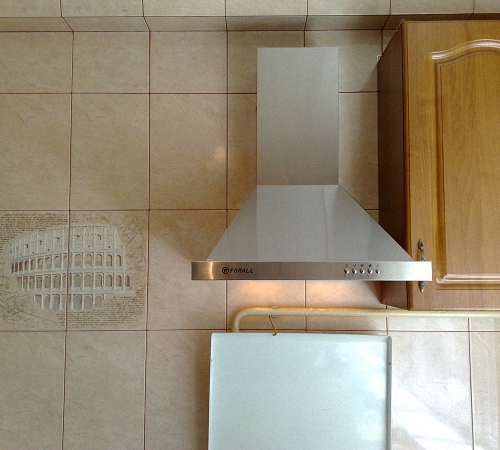
Community ventilation is a supply and exhaust ventilation that performs an exchange of air in the whole kitchen. Community ventilation has much less performance than local ventilation, as it should provide extract over the cutting area, washing dishes and directly above the meal table. The inflow is calculated as an exhaust compensation.
If your apartment is small kitchen (5-7 square meters), then there will be enough exhaust ventilation. It is also necessary to remember that for the normal functioning of the kitchen ventilation with the gas stove, the required sub-air support. Otherwise, the fan will rotate, but do not distinguish air masses. Where to take this influx? For kitchens of commercial destination, it is specifically mounted, or taken from the dinner hall. In our case, it falls naturally through windows micro. If this is not enough, you need to open the window.
Hood on the kitchen
Hoods allocate two types:
- the first is provided as air purifier, a kind of filter;
- the second type is called an exhaust umbrella.
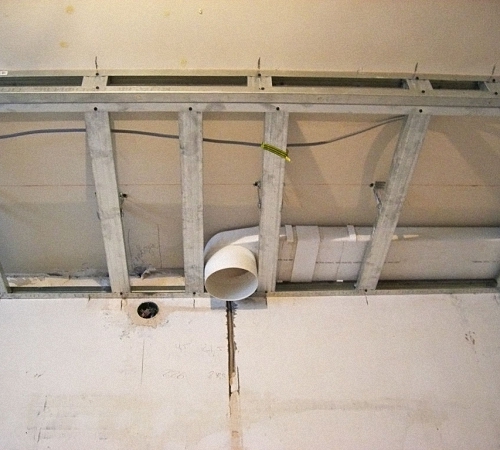
Regarding the first option, the installed filter pulls the fresh air, while all the soot, dust and fat is delayed inside, and clean air is already falling into the building. Other type is more efficient from the point of construction of the ventilation system for the kitchen. After all, all polluted air is output from the building through a ventilation shaft. In many cases, the hood is unable to install over the stove through some reasons. They may be the incorrect design of the kitchen, little space and so on. In this option, household ventilation of the kitchen in a private house will help you.
Many believe that most exhaust systems are very enormous and not comfortable, but besides standard models of the type "plastic box that is noisy" exists and decorative fans. They only perform their direct responsibilities - pull the air from your kitchen, but also decorate its appearance - the front panels of such fans can be made of stainless steel or completely from colored plastic or white with bright inserts.
How to choose a hood or fan into the kitchen?
Suppose you have defined the appearance. What's next? After all, as a rule, manufacturers offer fans or hoods of one species with an entire list with unusual labels. Let's try to figure out what you should actually.
The first thing you need to do is to understand what size (diameter) you need a fan. To do this, we go to the kitchen and measure the size of the ventilation shaft. It usually will be slightly more than 10 12.5 or 15 centimeters. We round the numbers to the smaller side and get the necessary diameter of your fan.
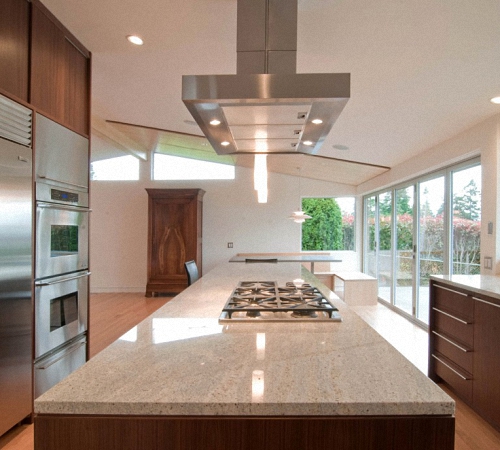
The next thing to do is to calculate the performance of the fan. To do this, we carry out simple mathematical actions: first multiply the width of the kitchen for the length and height. After that, the volume should be subtracted, it takes furniture. The resulting volume is multiplied first by 6 - this is the lower boundary of the fan performance. Separately multiply the volume by 12 is the upper limit of equipment performance. These borders are necessary in order to choose the actual fan model for the kitchen. Keep in mind - if your kitchen is combined with a room, then you need to take into account both rooms. It is also worth remembering than powerful the device, the louder it will work.
We calculated that for the average 6-meter kitchen, most likely, a fan is suitable with a capacity of 120-180 cubic meters per hour, and for 10 meters - 220-300 cubic meters per hour. What to do when the size of the ventilation shaft is less than the size of the fan, has the desired power? Pay attention to the fans with the "Turbo" console in the title. Usually they are 30% more powerful than their models with the same diameter.
What is worth paying attention to when choosing equipment for ventilation for kitchen
In addition to the size and performance there are several other nuances of the choice of fan. If the hosts are experiencing that uninvited guests can visit through the ventilation shaft - buy a fan equipped with a grid against insects. From the point of view of cleaning - the devices will be convenient in which the front panel is removed. You do not want the smell from neighboring cuisine to be in your ventilation system, then you need to select equipment with a check valve to prevent the opposite thrust.
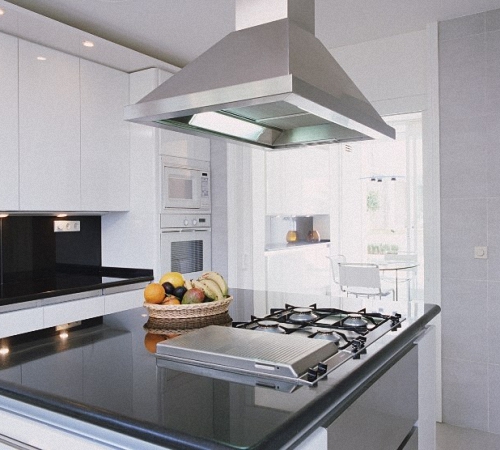
Ease of use - also not the last factor when choosing equipment. For example, ventilation in the kitchen with your own hands is mounted in the wall, and can be equipped with a cord switch - then you can turn it on and exclude it using a cord. Another useful thing is to have a timer in the fan - the built-in adjustable shutdown delay timer allows the fan to work for 2 to 30 minutes after stopping its switch.
Mount the fan
Before making ventilation in the kitchen, check as far as the air ducts observed in the building are clogged. When faulty, contact your hob or other instance so that your mine can be cleaned.
Instruction:
1. To begin with, you need to set the place where you will have a fan, before it, having done the hole in the wall of the desired diameter for the pipe.
2. After the equipment is installed, and the free space between it and the wall must be used.
3. From the outside, install the grid.
4. After performing all steps, the equipment can be included in the outlet.
If your ventilation mine is not working, you can put more powerful equipment, for example, centrifugal - its power is enough to throw air through the slots in the ventilation system. But, acquiring an extremely powerful fan, you can unhably deliver the problems to those who live above with the floors. The limit is a huge amount of air, served in the central air duct, will turn their exhaust grilles into the airless, and therefore the smells of your kitchen plunge into neighboring apartments together with dust and mud accumulated in the ventilation mine.
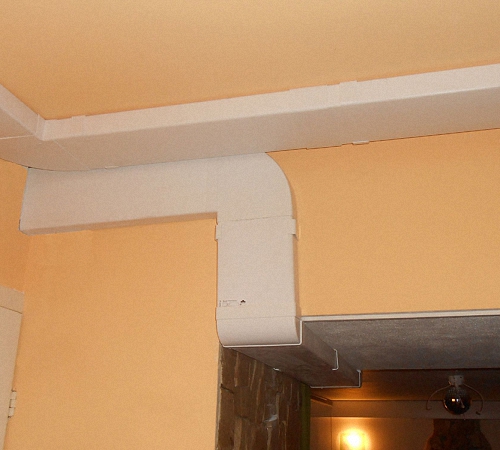
Having an exhaust is not the only option
Unlike other rooms, in the kitchen it is worth installing not only extractor, but also equipment for air inflows. In such cases, fans are installed directly to the window. More modern option are window or wall ventilators.
After all, there is a concept as a balanced inflow-hood of air from the kitchen. This means that if you release the air through the hood or fan, then it should come from somewhere. When designing buildings, this value was used as a natural air exchange scheme. And with the latest devices and installations of energy saving (sealed windows and doors), such a traction begins to disappear - from here and fungus on the windows and walls, an increased level of humidity in the building and many other antipathetic surprises for residents of the house. In any case, you can open the window, but this is not an option. In addition to the smells of self-catering, you will get more dust and a lot of dirt from the street and draft.
The ventilator is a small overlay on the window (although there are walls), which transmits a limited amount of air into the room. It usually consists of two parts:
- one external - protective grille from insects and filter;
- the second is internal, equipped with an air adjustment valve.

Can be with manual or automatic control. Mounted by installing in a plastic or wooden window to provide air inflows. The wall ventilator, as follows from the name, mounted in the wall. This device is also equipped with a grid, a regulator, although there is a wall ventilator on the solar panel in which a small fan is mounted. It is these small devices that will help balance the microclimate in your kitchen.
Of course, the price of such devices will be significantly higher, but this will allow you to maintain a certain microclimate indoor. With the proper installation of the ventilation system, it will serve for many years and at the same time work efficiently. A reasonable choice and professional installation of a specific ventilation scheme will be safely and regularly removed contaminated air from the room.



